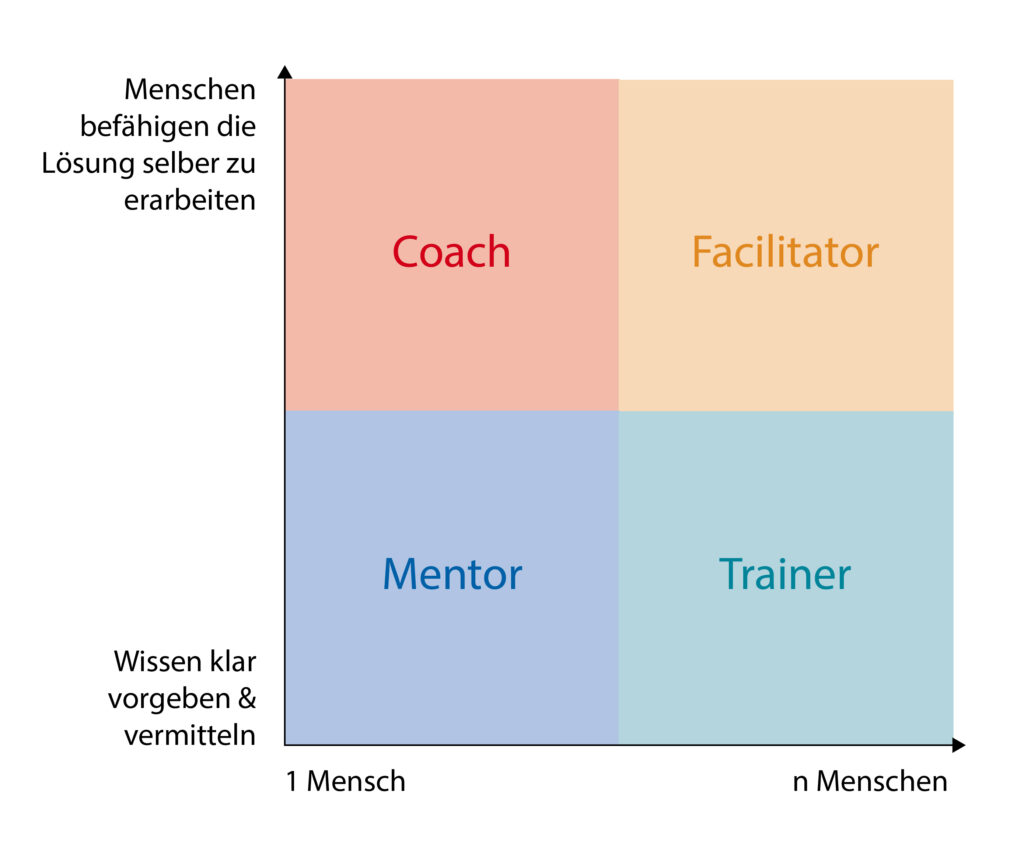As Scrum Master we are often faced with the challenge of helping a team to work in a self-organized and self-responsible manner. But what does Self-management in concrete terms? What are the characteristics of a self-organized team and how can we as Scrum Masters help to develop these skills? In this article, I will introduce you to a structured approach that will help you to guide your team along this path.
Step 1: What does self-management mean?
Before we can promote self-management, we as Scrum Masters need to develop a clear vision of what constitutes a self-organized team. What does the self-organized team do and what does it not do? It is worth translating this vision into tangible characteristics. For example:
- Can the team make decisions independently?
- Does it take responsibility for its tasks? If so, what exactly does that look like?
- How well does internal communication and collaboration work?
- …
A practical exercise is to make a list of the characteristics that the self-organized team should have. The points should then be compared with each other and categorized taking the following questions into account:
- In which areas/activities is it most important to me as a Scrum Master that my team "works"?
- Where does the team stand today?
- Where is the greatest potential for development?
This prioritization creates the basis for a "coaching backlog" with which you can work specifically on the relevant topics.
Step 2: Understanding the role of the Scrum Master
Self-management does not mean that the Scrum Master becomes superfluous - on the contrary. The role of the Scrum Master changes and, depending on the situation, you switch between four roles: Coach, facilitator, mentor and trainer.
- Coach:
The aim here is to create the framework for a better understanding of the problem in a one-to-one meeting and to encourage the person to develop their own solutions. - Facilitator:
In this role, you act as a moderator and guide the team through a retrospective, for example. - Mentor:
The role of mentor also involves a one-to-one discussion in which you impart methodological knowledge in a targeted manner. For example, teaching an inexperienced product owner a certain technique. In doing so, you draw on your own experience in these areas. - Trainer:
You provide the entire team with a technique, such as estimating, so that the entire team can estimate product backlog entries independently

Step 3: Retrospectives as a tool for better self-management
Retrospectives are another method of promoting self-management with the team. They provide space to reflect on the topic together with the team. This does not mean that you should skip step one. It makes sense to think in advance about what a self-organized team looks like for you.
Here is a suggestion for a retro on the topic of "What does self-management mean for us?":
- Collect the team's ideas on the characteristics of a self-organized team.
- Discuss in which areas the team is already strong and where there is still room for improvement.
- Develop concrete measures together to strengthen self-organization.
Before you carry out such a retro with your team, you should be sure that your team is ready for it. Some teams are too inexperienced to do a retro on self-management. The team needs a certain level of maturity and the will to change something.
You can tell from the following team behaviors, for example, that you can work on the topic well with the team:
- The team has gained confidence in how the Scrum events and artifacts are lived.
- People have gotten to know each other.
- If I as SM have the feeling that I'm acting more and more like a scrum mom, then I can do a retro.
- In meetings and conversations, team members express that they would like to make better decisions together.
- Members express a desire to work more efficiently without it feeling like "targets".
Step 4: Avoid the "scrum mom" trap
A common stumbling block is to intervene too much as a Scrum Master and thereby unconsciously inhibit the self-organization of the team. If you find yourself constantly acting as a problem solver or decision-maker, it's time to take a step back. Self-management also means giving the team room for their own experiences - and mistakes.
Conclusion: Empowerment as the key to success
The path to a self-organized team is a process that requires patience and clear goals. Your job as a Scrum Master is to create the framework for this change, to support the team and at the same time to let go when necessary. By switching between the roles of coach, facilitator, mentor and trainer, you help the team not only to understand self-management, but also to live it. So make sure that you have a vision of what self-management means to you. Work with a coaching backlog to build up self-management with targeted measures and involve the team in the process. Strengthen yourself as a Scrum Master in the facets of coach, facilitator, mentor and trainer and use these actively to implement the measures.

Write a comment